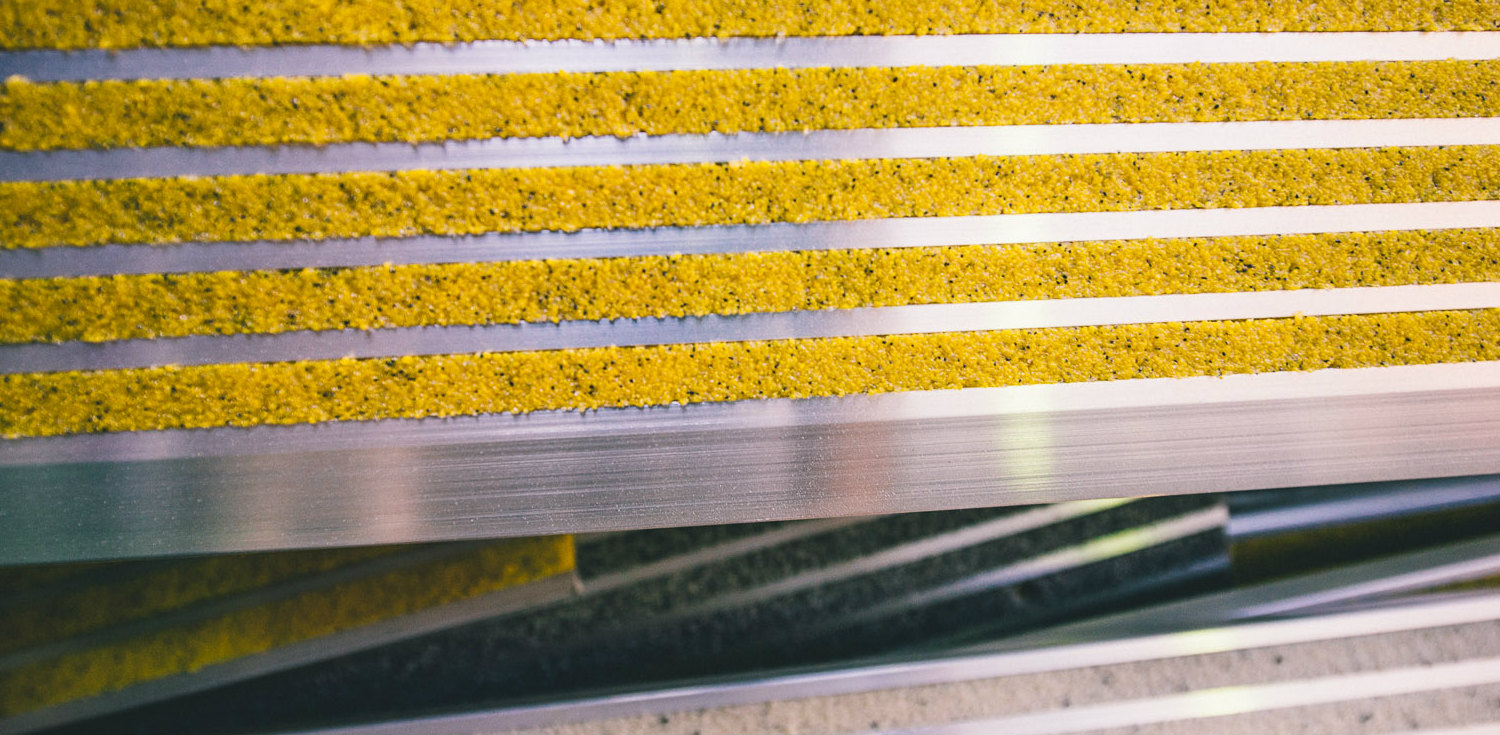A safety stair tread is an essential component to any building exposed to pedestrian traffic. Not only do anti-slip treads and stair tread nosing minimise the risk of pedestrian slips and falls, they help to protect owners, building managers and construction workers from liability in the event of an accident. They also protect underlying floor surfaces from costly damage through continual wear and tear.
But simply installing these protective systems is not enough to stay compliant with building codes and Occupational Health and Safety regulations. The stair tread lifecycle is not infinite, so it’s important that you know when it’s time to replace them in order to keep the building up to code. However, there’s a lot you can do to extend the lifespan of your flooring, so here’s some tips on how you can get avoid unnecessary replacements in the long run.
Extending the lifespan of safety stair treads and nosing
You can minimise the need to replace safety stair treads and nosings by:
- Choosing high quality, durable products, which will significantly extend the safety stair tread lifecycle and help you reduce the long term costs associated with building maintenance.
- Ensuring that all step treads and anti-slip nosings are regularly cleaned of dirt and moisture. It’s natural that these elements will build up over time, but regular maintenance and thorough cleaning will ensure they remain at optimal performance.
- Using anti-slip products which are fully compliant with building standards, including disability requirements for mobility and visual impairment, and general fire testing.
How to tell when to replace safety stair treads and nosing
There’s no definitive time period for how long your safety stair treads and nosing should last until they’re replaced. This will depend on the frequency of foot traffic as well as the previous construction materials used. Latham Safety stair treads generally have a longer lifespan than other anti-slip nosings on the market, yet it’s not uncommon for both to require reinstallation at some point. Here’s the best times to consider a replacement:
When the building is renovated
This is a perfect opportunity to audit and evaluate the building’s overall safety compliance (for a thorough checklist on compliance standards click here). In regards to floor and stairway safety, changes in lighting, decor and colour scheme may also deem it necessary to change the contrast of safety stair tread and nosing to ensure all elevated floor surfaces remain visible, and aligned to the overall aesthetic of the building.
When floor surfaces become loose or damaged
If you’re using a premium architectural flooring product, the likelihood of damage to floor surfaces is rare so long as it is cared for correctly.. That said, if the flooring of a building has become compromised it is integral that this be replaced immediately, as damaged surfaces or uplifted edges can snag on clothing and lead to slips and falls.
The Latham range of Asbra Safety Stair Treads and Nosings are slip-resistant, durable and rigorously tested to meet Australian safety standards. Find out more check out our product range or get in touch with the Latham team.
To find out more about Latham products, please visit www.latham-australia.com. To talk to a Latham product expert, call 1300 LATHAM (528 426) or email sales@latham-australia.com.


